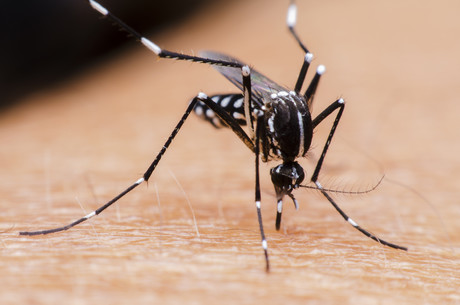Zika still a threat to Australia

Zika appeared suddenly on the world stage in February 2016. The World Health Organisation (WHO) declared a Public Health Emergency of International Concern (PHEIC) in response to claims that an outbreak in Brazil led to birth defects. After an initial flurry of activity, it was widely reported in November 2016 that WHO had declared the emergency over and interest in Zika quickly waned. But Zika has not gone away and the threat to Australia remains.
Zika is a mosquito-borne virus, similar to dengue fever. Since the PHEIC was declared, Zika transmission has been discovered in 79 countries. There are now few remaining areas that have the right mosquito vectors that have not had detected Zika transmission. One such area is north Queensland.
Zika: a problem for Australia
There are many indications that Zika is a problem for north Queensland: the vector mosquito, Aedes aegypti (plus Aedes albopictus in the Torres Strait islands); a non-immune population of about half a million, including 5000 pregnant at any one time; regular outbreaks of the related dengue virus triggered by infected travellers; and Zika detections in the Pacific islands and Australian tourist destinations such as Bali, Papua New Guinea and Thailand.
Twelve tourists or returned travellers have been detected with Zika infection in the risk area so far. These are only the infections that are known about; more infected individuals may have passed through the area.
To complicate the control of this virus, Zika can also be sexually transmitted and be passed from an infected mother to her unborn baby.
The dangers of Zika
Ongoing international research confirmed that Zika causes microcephaly, a condition where a baby’s brain does not develop properly, leading to a small head. Zika also causes a range of other serious adverse birth outcomes. But it’s not only pregnant women who are at risk. Anyone with Zika can get serious neurological conditions, including Guillain-Barre syndrome, a potentially life-threatening paralysis. However, most Zika infections are mild; some individuals are unaware that they have the virus. People who are not very sick will not seek medical attention, nor get tested, but can spread Zika. In many areas, the first indication that Zika was spreading was babies being born with microcephaly or pregnant women testing positive.
But surely the threat is passed now? Didn’t the WHO declare the emergency over? That is not what happened. By November the WHO had confirmed that Zika was the cause of congenital disabilities and neurological complications. They now knew the extent of the spread of Zika. Affected regions were facing a serious long-term public health threat. Faced with these facts, WHO escalated the PHEIC into a sustained international program of research, health services and public health responses. They did this because it was worse than they first thought, not because things had got better.
“Zika virus and associated consequences remain a significant enduring public health challenge…The EC recommended that this should be escalated into a sustained programme of work with dedicated resources to address the long-term nature of the disease and its associated consequences.” — WHO Emergency Committee, 18 November 2016
Public health units in Cairns and Townsville have worked tirelessly over the past year to keep Zika out of north Queensland. Local efforts to prevent a disastrous Zika outbreak need to expand further: better warnings to travellers, detection and testing of potential cases, specific mosquito surveillance and control programs, and expanding current research on releasing virus-resistant mosquitoes (the Eliminate Dengue® program). Zika is still present in many countries. It remains a potential threat to north Queensland, now and into the future.

Breastfeeding challenges healthcare professionals should be prepared to address
A neonatal nurse and lactation consultant sets out what she sees as the most common breastfeeding...
Framework seeks to cut medicine errors at transitions of care
The first coordinated, hospital-based approach to medication management at transitions of care...
Faster acute kidney injury test in development
An Australian university and a diagnostic company have teamed up to develop point-of-care blood...


![[New Zealand] Transform from Security Awareness to a Security Culture: A Vital Shift for SMB Healthcare — Webinar](https://d1v1e13ebw3o15.cloudfront.net/data/89856/wfmedia_thumb/..jpg)
![[Australia] Transform from Security Awareness to a Security Culture: A Vital Shift for SMB Healthcare — Webinar](https://d1v1e13ebw3o15.cloudfront.net/data/89855/wfmedia_thumb/..jpg)




